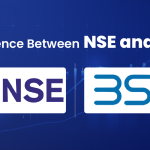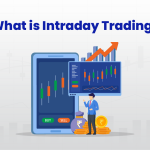The Sensex, officially known as the Bombay Stock Exchange Sensitive Index, is a key indicator of the Indian stock market’s performance. Established in 1986, it tracks the top 30 companies listed on the Bombay Stock Exchange (BSE), representing various sectors of the economy.
As one of the oldest stock indices in Asia, the Sensex serves as a barometer for investors, reflecting the market’s health and investor sentiment. Understanding the Sensex is important to understand the stock market. This article looks at how it works, its calculation, why it matters, and how one can make investment in it.
How Does the Sensex Work?
The Sensex, or the S&P BSE Sensex, is the primary benchmark index of the Bombay Stock Exchange (BSE) in India. It includes 30 of the largest and most actively traded stocks on the BSE, representing key sectors of the Indian economy.
The Sensex serves as a gauge of India’s economic health and market trends. It is calculated using the free-float market capitalisation method, which takes into account the market value of the tradable shares of its constituent companies. The Sensex tracks the performance of these large corporations, and offers a glimpse into the general mood and trajectory of the Indian stock market.
What is Sensex Calculated?
The Sensex, or the S&P BSE Sensex, reflects the overall market sentiment and is calculated using the free-float market capitalisation method.
Formula
Sensex = (Free-float market cap of 30 companies / Base market cap) × 100
- Free-float market capitalisation refers to the portion of a company’s shares available to the public for trading.
- The base market cap is the fixed value of the index at its inception.
Example
If the free-float market cap of the 30 companies is ₹10 trillion and the base market cap is ₹1 trillion, then:
Sensex=(10/1)×100=1000
This means the Sensex would be at 1000 points.
How are the Constituents of Sensex Selected?
The S&P BSE Index Committee selects the constituents of the Sensex based on several key criteria. These criteria ensure that the index accurately represents the performance of the Indian stock market. Here are the main parameters considered:
- Market Capitalisation: Companies must have a large to mega-cap market capitalisation.
- Liquidity: Stocks should be relatively liquid, meaning they are frequently traded.
- Trading Frequency: The frequency of trading activity is taken into account.
- Sectoral Representation: The index aims to include companies from various sectors to ensure diversity.
- Revenue Growth: Companies should exhibit strong revenue growth from their primary operations.
How to Invest in Sensex?
Investing in the Sensex can be a smart way to gain exposure to India’s top companies. Here are a few ways to get started:
1. Direct Equity Investment
Purchase shares of the 30 companies that make up the Sensex through a brokerage account. This requires active management and monitoring of each company’s performance.
2. Index Mutual Funds
These funds mimic the performance of the Sensex by investing in the same 30 companies. It’s a passive investment strategy, ideal for those who prefer a hands-off approach.
3. Exchange-Traded Funds (ETFs)
ETFs also track the Sensex and are traded on stock exchanges like individual stocks. They offer liquidity and flexibility, making them a cost-effective option.
4. Index Futures and Options
These derivative instruments allow you to speculate on the future performance of the Sensex. They can be used for hedging or making leveraged bets but come with higher risks.
5. Systematic Investment Plans (SIPs)
Invest a fixed amount regularly in index mutual funds or ETFs. This method helps average out the cost over time and is a disciplined way to build wealth gradually.
What is the Difference Between Sensex and Nifty?
Sensex and Nifty are the two primary stock market indices in India. While Sensex represents the Bombay Stock Exchange (BSE), Nifty represents the National Stock Exchange (NSE). Both indices track the performance of a select group of stocks, but they differ in their composition and methodology. Below is a table highlighting the key differences between Sensex and Nifty:
| Parameter | Sensex | Nifty |
| Exchange | Bombay Stock Exchange (BSE) | National Stock Exchange (NSE) |
| Number of Stocks | 30 | 50 |
| Base Year | 1978-79 | 1995 |
| Calculation Method | Free-float market capitalisation | Free-float market capitalisation |
| Sector Coverage | Limited to 30 large-cap companies | Broader coverage across 24 sectors |
| Index Value Base | 100 | 1000 |
Conclusion
The Sensex serves as a vital barometer for the Indian stock market, reflecting the country’s economic health and investor sentiment. Its fluctuations can significantly impact not only investors but also the broader economy. By staying informed about the factors influencing the Sensex and understanding its movements, investors can make more strategic decisions.
Frequently Asked Questions
Q1. What does Sensex depend on?
The Sensex depends on the free-float market capitalisation of its 30 constituent companies. This means it calculates the market value of shares that are available for trading, reflecting their economic significance.
Q2. How many stocks are in Sensex?
The Sensex comprises 30 of the largest and most actively traded stocks listed on the Bombay Stock Exchange (BSE). These companies represent various sectors, making the index a key indicator of the Indian stock market.
Q3. When did Sensex start?
The Sensex was launched on January 1, 1986, with a base value of 100 points set in 1979. It serves as a benchmark index for the performance of the Indian stock market over time.










